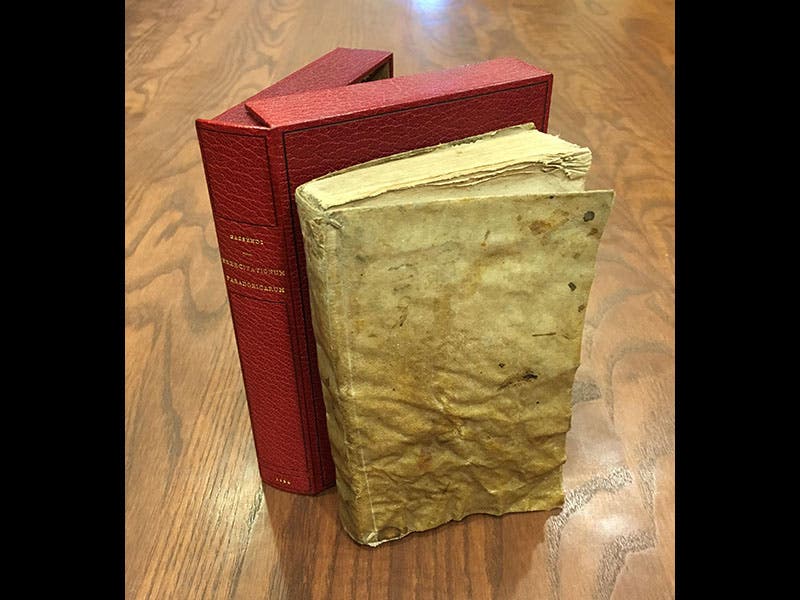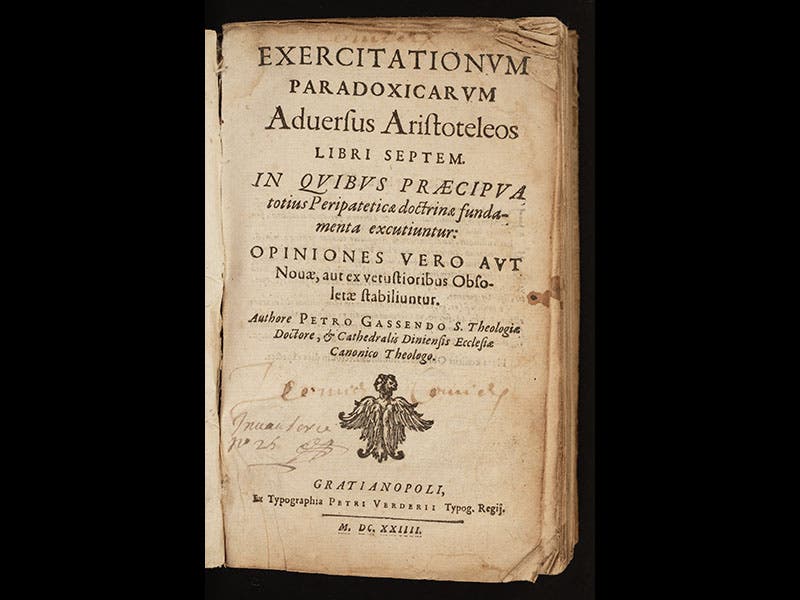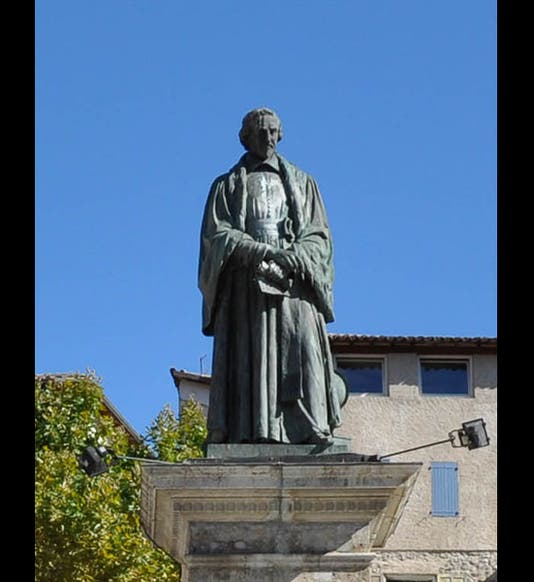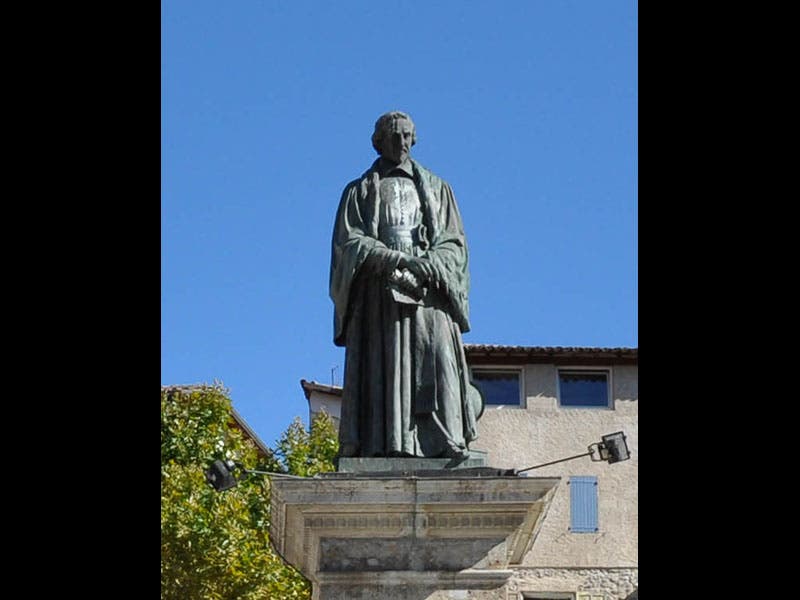Scientist of the Day - Pierre Gassendi

Linda Hall Library

Linda Hall Library
Pierre Gassendi, a French natural philosopher, died Oct. 24, 1655, at the age of 63. Gassendi is not nearly as well-known as his contemporary René Descartes, but in their day they were considered near equals, proponents of two different mechanical philosophies. Gassendi, unlike Descartes, was an atomist. It was Gassendi who revived ancient atomism and made it respectable. Ever since Democritus proposed the idea in ancient Greece, atomism had always been associated with atheism, since it presents a world of soul-less matter, interacting at random, with no purpose or design. Gassendi, himself a Catholic priest, made atomism theologically respectable, suggesting that God created atoms and endowed them with motion, foreseeing their interactions, and using them as secondary causes to achieve divine ends. Through Gassendi, atomism would come to England, where it became a fundamental part of the mechanical philosophies of Robert Boyle and Isaac Newton.
It would be accurate to say that Gassendi was an anti-Aristotelian, and he made his break with the "philosophy of the schools" in his first book, Exercitationum paradoxicarum adversus Aristoteleos Libri septem (Seven Books of Paradoxical Exercises against the Aristotelians), published in 1624. Here the mild-mannered Gassendi vigorously attacked those who called themselves Aristotelians but who made a mockery of the teachings of the Stagirite, providing unintelligible explanations for every kind of phenomena and never doubting the truth of any of their assertions. Gassendi preferred the ancient Stoics, most of whom were Skeptics and admitted that Nature was so superior to the human mind that we can never discover the true causes of anything. Instead, we should content ourselves with describing effects to the best of our meagre ability and give up the search for underlying causes.
The Exercitationum is a very scarce book; Worldcat lists three copies in the world, one in Switzerland, one at Harvard, and one here at the Linda Hall Library. We acquired our copy in 1999 from the eminent New York rare book dealer, Jonathan Hill (second and third images).
The engraved portrait of Gassendi (fourth image) is from Charles Perrault, Les hommes illustres qui on paru en France pendant ce siècle (1696-1700), which has also provided us with portraits of Blaise Pascal and Ishmael Boulliau. The statue of Gassendi (first image) is in Digne, a small town in Provence in southeastern France where Gassendi lived and worked. I had the privilege of attending a conference in Digne many years ago, on the 400th anniversary of Gassendi's birth, where they are very proud of their native son. Most of all, I remember the fields of lavender. Atoms can do amazing things.
Dr. William B. Ashworth, Jr., Consultant for the History of Science, Linda Hall Library and Associate Professor, Department of History, University of Missouri-Kansas City. Comments or corrections are welcome; please direct to ashworthw@umkc.edu.








